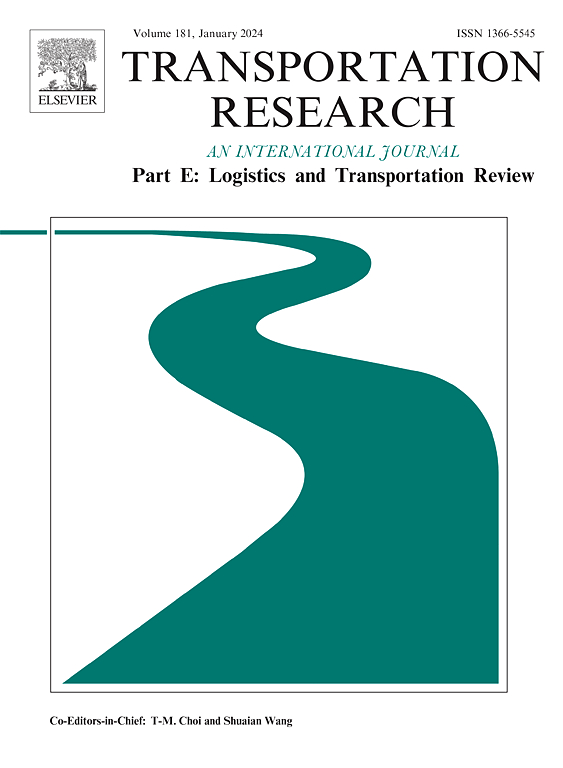When should suppliers introduce a live-stream channel: The role of limited supply capacity
IF 8.3
1区 工程技术
Q1 ECONOMICS
Transportation Research Part E-Logistics and Transportation Review
Pub Date : 2025-05-06
DOI:10.1016/j.tre.2025.104175
引用次数: 0
Abstract
The growth of e-commerce has driven numerous suppliers to adopt live-stream channels. However, most studies fail to account for capacity limitations in supply chains. This study examines a supplier with limited capacity collaborating with a streamer to conduct live-stream sales. Using a game-theoretical approach, we analyze how capacity constraints affect a supplier’s decision to introduce live streaming through either direct or reselling channels. Our analysis reveals that a supplier is more likely to adopt a live-stream channel when the commission rate and consumers’ additional costs associated with the live-stream channel are relatively low, provided capacity is not severely limited. Interestingly, even with a reselling channel, a supplier may benefit from a live-stream channel when consumer costs are relatively high. Moreover, a supplier with moderate capacity can sustain a live-stream channel at higher consumer costs than a supplier with low capacity. The study also reveals that the introduction of a live-stream channel always increases consumer surplus but does not consistently improve social welfare unless capacity is relatively abundant. Suppliers using direct channels require greater capacity to enhance social welfare than those using reselling channels. Furthermore, these results are robust across various extensions of the model.
供应商何时应该引入直播渠道:有限供应能力的作用
电子商务的发展促使众多供应商采用直播渠道。然而,大多数研究都没有考虑到供应链的能力限制。本研究考察了一个有限容量的供应商与流媒体合作进行直播销售。利用博弈论的方法,我们分析了容量限制如何影响供应商通过直接或转售渠道引入直播的决定。我们的分析表明,当与直播渠道相关的佣金率和消费者的额外成本相对较低时,供应商更有可能采用直播渠道,前提是容量没有受到严重限制。有趣的是,即使有转售渠道,当消费者成本相对较高时,供应商也可能从直播渠道中受益。此外,与容量较低的供应商相比,容量中等的供应商可以以更高的消费者成本维持直播频道。该研究还表明,引入直播频道总是会增加消费者剩余,但并不能持续改善社会福利,除非能力相对充足。使用直接渠道的供应商比使用转售渠道的供应商需要更大的能力来提高社会福利。此外,这些结果在模型的各种扩展中都具有鲁棒性。
本文章由计算机程序翻译,如有差异,请以英文原文为准。
求助全文
约1分钟内获得全文
求助全文
来源期刊
CiteScore
16.20
自引率
16.00%
发文量
285
审稿时长
62 days
期刊介绍:
Transportation Research Part E: Logistics and Transportation Review is a reputable journal that publishes high-quality articles covering a wide range of topics in the field of logistics and transportation research. The journal welcomes submissions on various subjects, including transport economics, transport infrastructure and investment appraisal, evaluation of public policies related to transportation, empirical and analytical studies of logistics management practices and performance, logistics and operations models, and logistics and supply chain management.
Part E aims to provide informative and well-researched articles that contribute to the understanding and advancement of the field. The content of the journal is complementary to other prestigious journals in transportation research, such as Transportation Research Part A: Policy and Practice, Part B: Methodological, Part C: Emerging Technologies, Part D: Transport and Environment, and Part F: Traffic Psychology and Behaviour. Together, these journals form a comprehensive and cohesive reference for current research in transportation science.

 求助内容:
求助内容: 应助结果提醒方式:
应助结果提醒方式:


